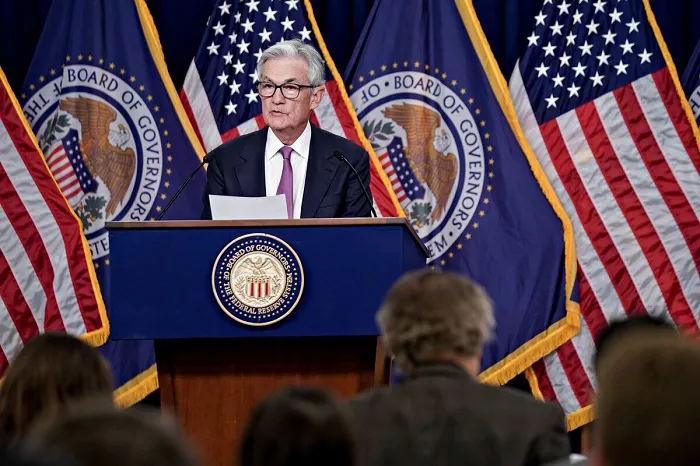The Fed’s updated economic projections show officials expect unemployment and inflation in the U.S. to increase, while economic growth is expected to slow in the coming quarters. This raises growing risks of stagflation—a rare scenario where inflation rises as growth weakens.
Unlike many other major central banks, the Fed is choosing not to cut interest rates preemptively. Instead, it prefers to wait for clearer signs about the impact of tariffs on inflation before making further moves.
This approach makes sense. The full effects of President Donald Trump’s tariffs on prices and economic activity are not expected until after July 9, when the current pause on so-called “reciprocal” tariffs ends. Meanwhile, new geopolitical tensions, especially the escalating conflict between Israel and Iran, are pushing oil prices higher.
Given these challenges, maintaining a “modestly restrictive” policy, as Powell described, appears reasonable.
Although Powell describes the economy and labor market as still “solid,” the growth outlook is worsening almost as fast as inflation concerns are rising.
Fed officials now project that cumulative GDP growth over 2025-2027 will be about 1.25 percentage points lower than their December forecast, while cumulative inflation is expected to be roughly one percentage point higher.
If the risks to growth and inflation roughly balance each other, why did officials reduce their projected interest rate cuts for the next two years by a quarter point? In other words, why do they expect a higher “terminal” interest rate?
Hawkish Shift
This more hawkish tone likely aims to manage market expectations. The Fed’s primary job is to keep inflation expectations stable. Recent surveys show consumers now expect price increases at levels not seen in decades.
There may be additional reasons for this stance. The Fed missed the inflation surge in 2021-2022, initially calling price rises “transitory.” Policymakers faced criticism for this misjudgment, and they are likely determined not to repeat that error.
America’s growing fiscal challenges also play a role. Persistent budget deficits, rising debt, a costly tax and spending bill, and weakening global confidence in the U.S. dollar are keeping long-term Treasury yields high. This may justify a higher long-term interest rate.
Finally, President Trump’s repeated public criticism of the Fed and Powell for not cutting rates could be backfiring. It might be encouraging the Fed to show its independence and resist political pressure.
Powell would likely downplay or deny these factors publicly, but they still influence how investors interpret the Fed’s decisions.
Navigating Uncertainty
Ultimately, the Fed’s biggest challenge is uncertainty. “The level of uncertainty around economic policymaking right now is sky-high. Other countries aren’t facing this like we are. The U.S. is very unique,” says Mike Konczal of the Economic Security Project.
Powell wants to wait and see how things develop once Trump’s tariffs are fully implemented. Choosing to hold steady for now, especially while the economy remains relatively healthy, is a cautious approach.
This uncertainty also casts doubt on the usefulness of the Fed’s “dot plot”—a chart showing each of the 19 Fed officials’ year-end interest rate forecasts. For example, while the median forecast still calls for a 50 basis point rate cut this year, seven officials expect no cuts at all.
“No one holds these rate paths with a great deal of conviction,” Powell told reporters. “Think of it as the least unlikely path in a situation where uncertainty is very high.”
In other words, the Fed admits it has little clarity right now and will reassess in the coming months.
The Fed’s next update on economic projections will come in September, by which time there should be more clarity on tariffs, Middle East tensions, and the U.S. fiscal outlook. Until then, Powell and his colleagues will watch carefully as events unfold—just like everyone else.


